MA=3kg,MB=4kg,MC=8kg. Coefficient of friction between any two surface is 0.25 pulley is frictionless and string is massless .A is connected to wall through a massless right rod.
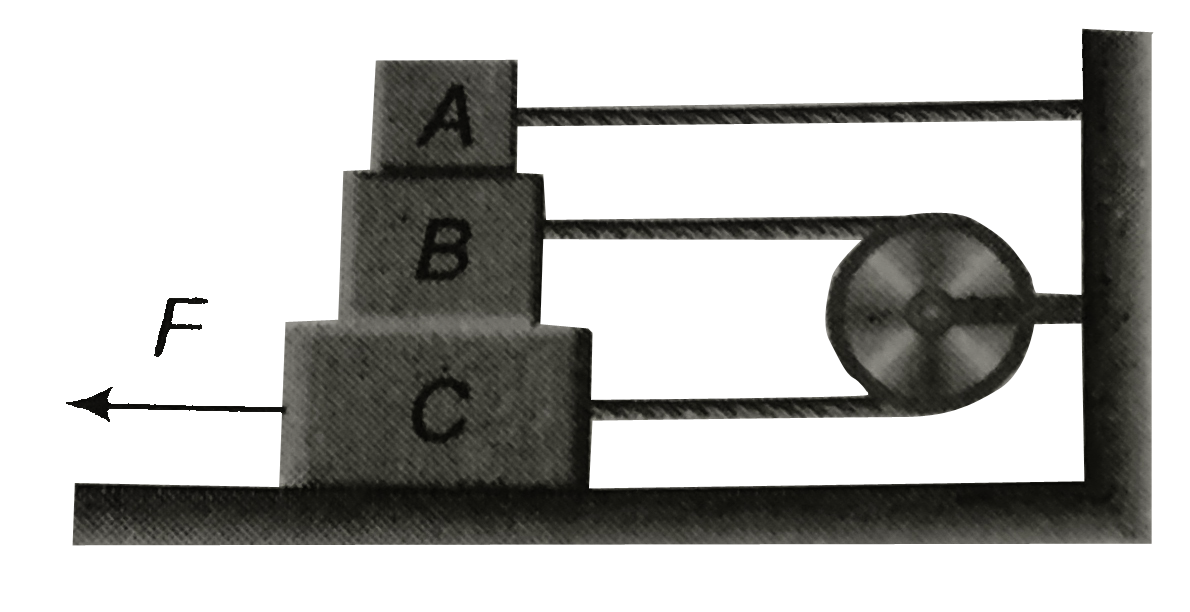
The correct Answer is:8 kg.wt
Step by step video, text & image solution for M_(A) = 3 kg ,M_(B) = 4 kg ,M_(C) = 8 kg. Coefficient of friction between any two surface is 0.25 pulley is frictionless and string is massless .A is connected to wall through a massless right rod. by Physics experts to help you in doubts & scoring excellent marks in Class 11 exams.
Topper's Solved these Questions
- BOOK - NN GHOSHCHAPTER - FRICTION, WORK POWER AND ENERGYEXERCISE - Exercises (A)15videos
FRICTION, WORK POWER AND ENERGY
- BOOK - NN GHOSHCHAPTER - FIRST LAW OF THERMODYNAMICSEXERCISE - All Questions39videos
FIRST LAW OF THERMODYNAMICS
- BOOK - NN GHOSHCHAPTER - GRAVITATIONEXERCISE - EXERCISE29videos
GRAVITATION
Similar Questions
In the diagram shown, the blocks A, B and C weight, 3kg, 4kg and 5kg respectively. The coefficient of sliding friction between any two surface is 0.25. A is held at rest by a massless rigid rod fixed to the wall while B and C are connected by a light flexible cord passing around a frictionless pulley. Find the force F necessary to drag C along the horizontal surface to the left at constant speed. Assume that the arrangement shown in the diagram, B on C and A on B, is maintained all through. (g=9.8m/s2)
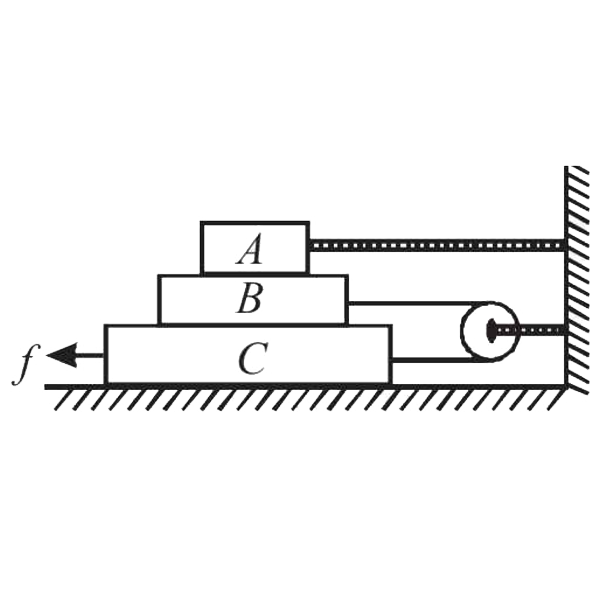 View Solution
View SolutionFind the relation between acceleration of the two blocks m1andm2. Assume pulleys are massless and frictionless and the strings are inextensible .
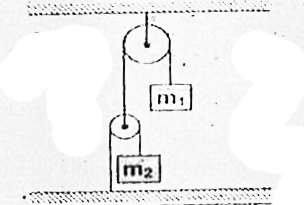 View Solution
View Solution
Knowledge Check
- Question 1 - Select One or More
1kg and 4kg blocks lie on a rough horizontal surface. The coefficient of friction between 4kg blocks and surface is 0.2 while the coefficient of firction between 1kg blocks and the surface is 0.6. All the pulley shown in the figure are massless and frictionless and all strings are massless and frictionless and all strings are massless.
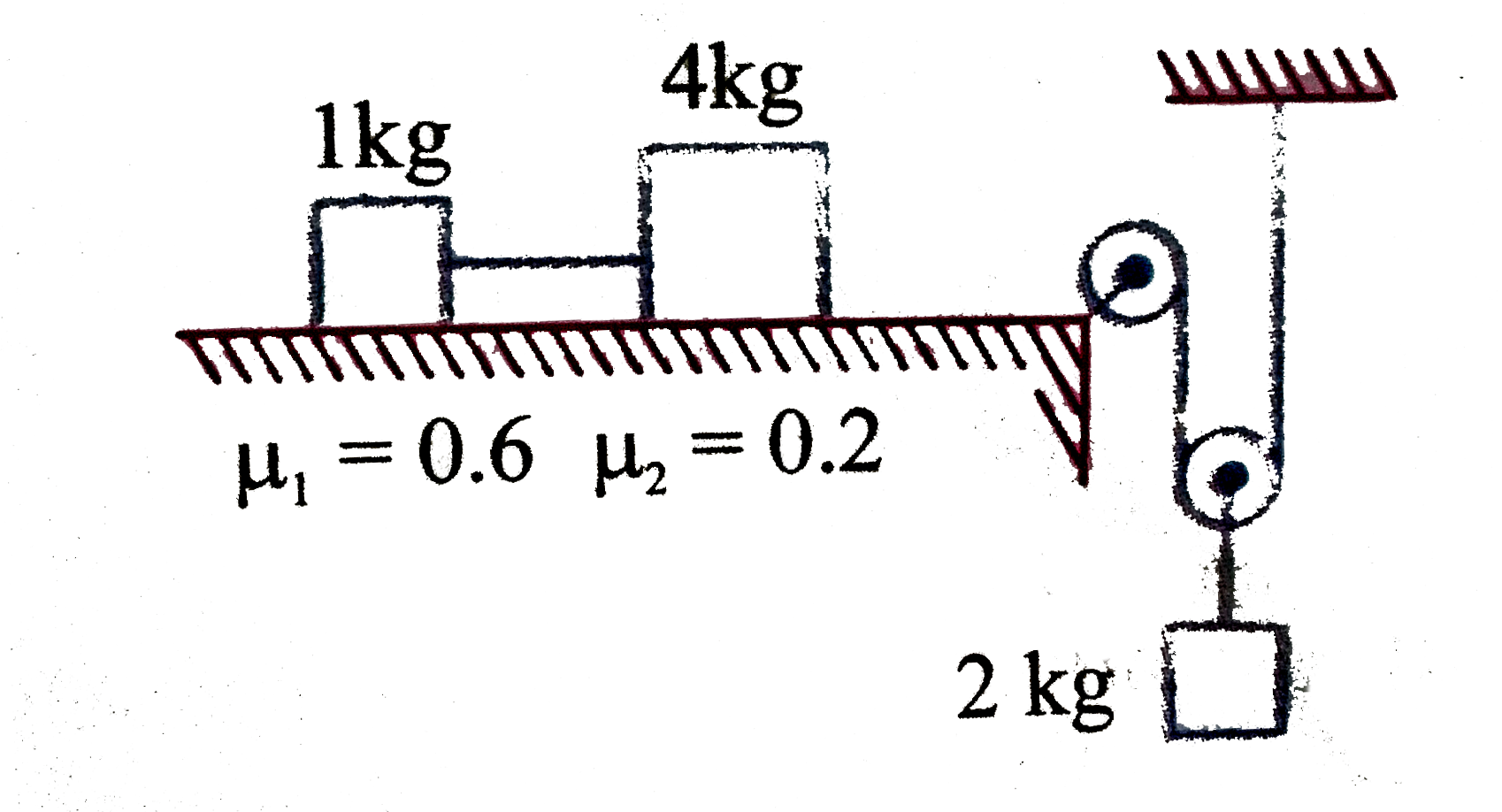 AThe frictional force acting on 1kg blocks is 2N.BThe frictional force acting on 1kg block is 6NCThe tension in the string connecting 4kg block and 1kg blocks is 1NDThe tension in the string connecting 1kg block and 4kg blocks is zero.
AThe frictional force acting on 1kg blocks is 2N.BThe frictional force acting on 1kg block is 6NCThe tension in the string connecting 4kg block and 1kg blocks is 1NDThe tension in the string connecting 1kg block and 4kg blocks is zero. - Question 2 - Select One
In the system shown in fig the pulley is frictionless and the string massless if m1=m2 thrust on the pulley will be:
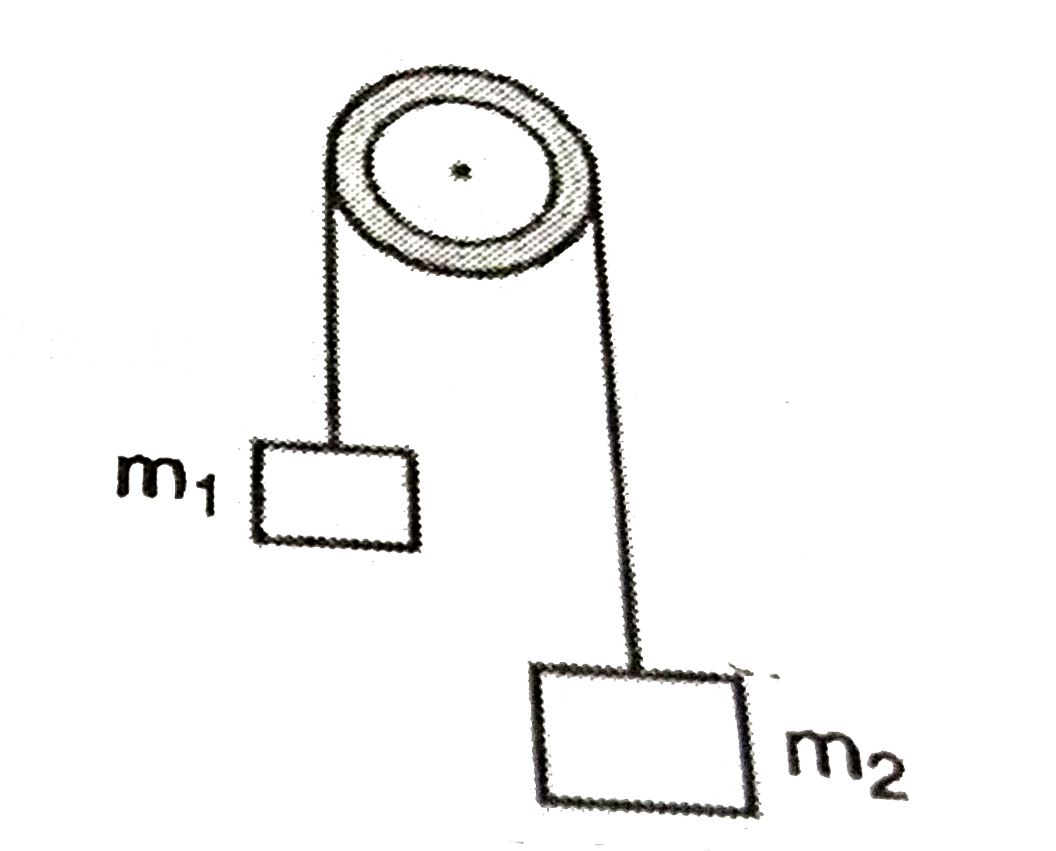 Aless than(m1+m2)gBgreater than(m1+m2)gCequal to (m1+m2)gDnone of the above
Aless than(m1+m2)gBgreater than(m1+m2)gCequal to (m1+m2)gDnone of the above - Question 3 - Select One
In the figure mA=mB=mC=60kg. The coefficient of friction between C and ground is 0.5B and ground is 0.3,A and B is 0.4.C is pulling the string with the maximum possible force without moving. Then the tension in the string connected to A will be
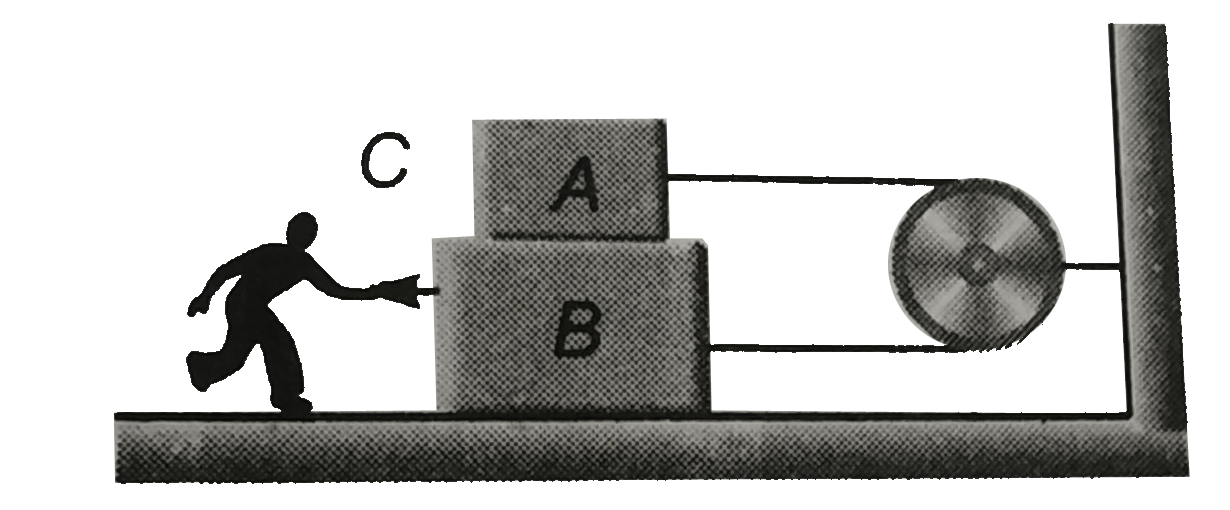 A120NB60NC100NDzero
A120NB60NC100NDzero
Two blocks of mass m1=15 kg and m2=10kg connected to each other by a massless inextensible string of length 0.4 m are placed along a diameter of turn table rotating with an angular velocity of 15rads−1 about a vertical axis passing through its centre O. Mass m1 is at a distance of 0.225 from O. The coefficient of friction between the table and m1 is 0.6 while there is no friction between m2 and the table. The masses are observed to be at rest with respect to an observer on the turn table. Calculate the frictional force in newton on m1.
View SolutionIn the arrangement shown in figure pulleys are mass of block A,b and C is m1=5kgm2=4kg and m3=2.5kg respectively .Co-efficient acceleration of friction for both the plane is μ=0.50 Calculate acceleration of which block when system is released from rest
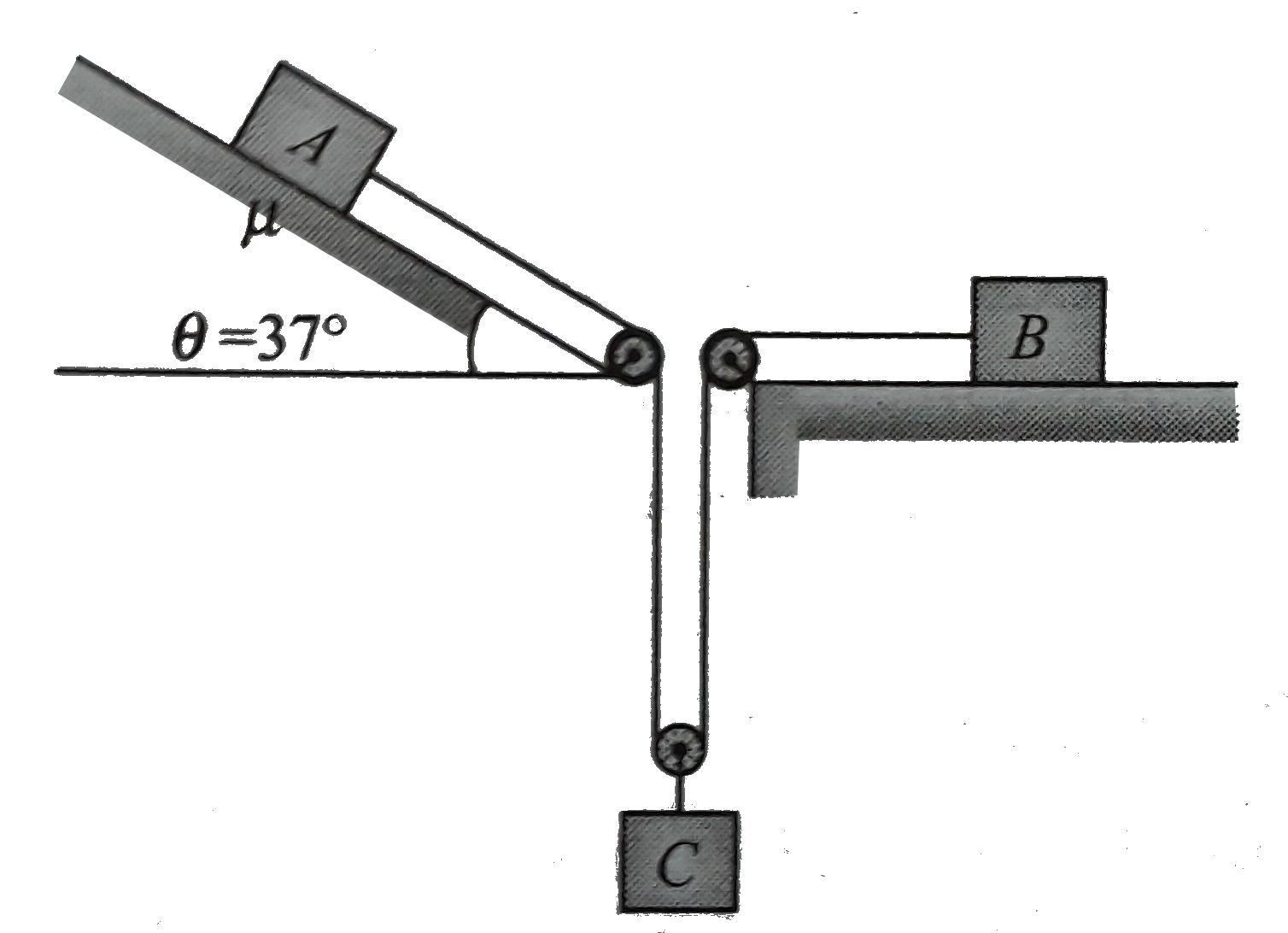 View Solution
View SolutionIn the figure shown m1=5kg,m2=10kg & friction coefficient between m1&m2 is μ=0.1 and ground is frictionless then :
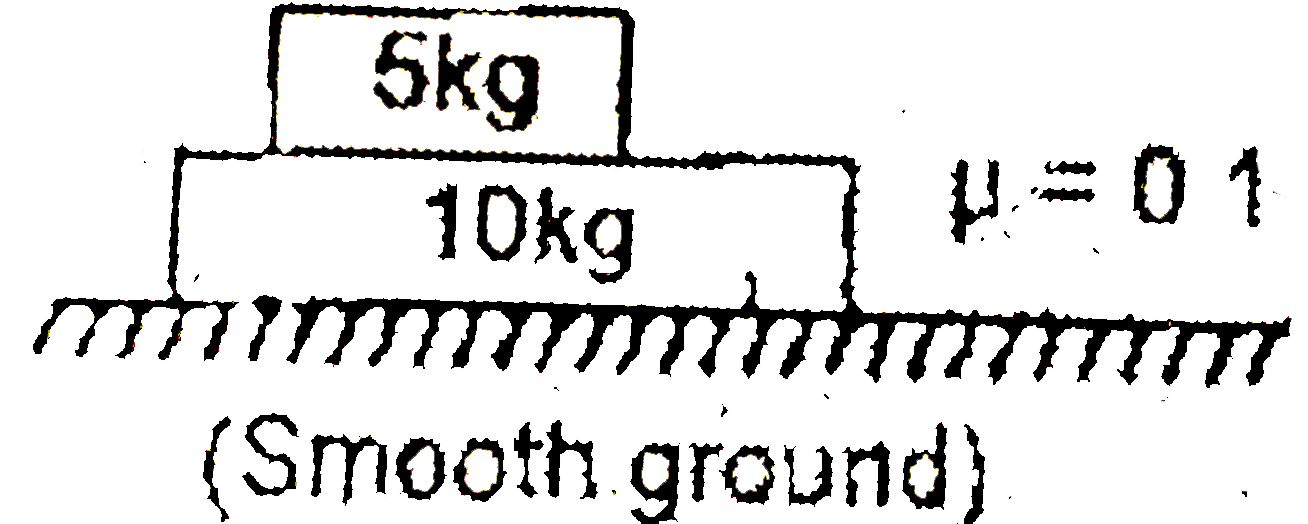 View Solution
View Solution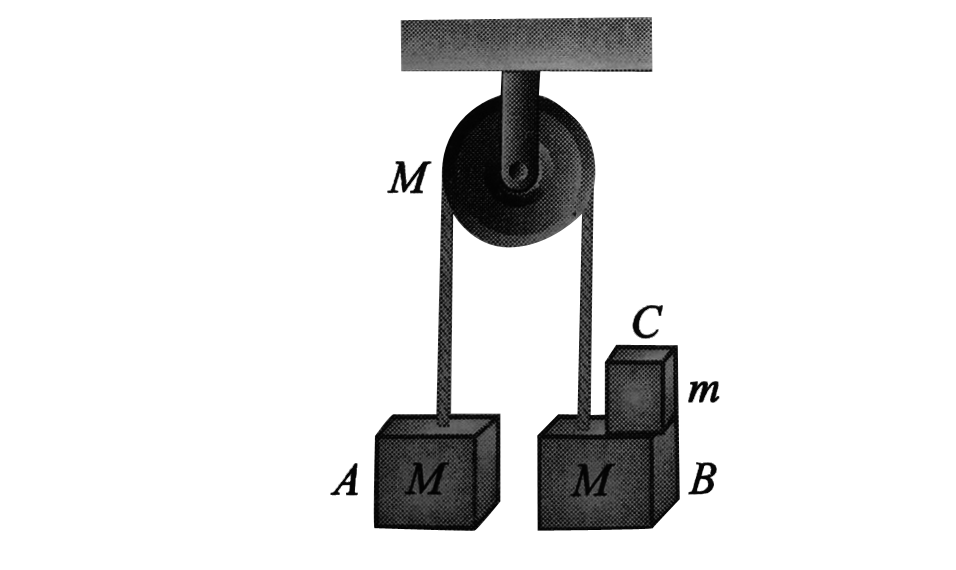
For the following system shown assume that pulley is frictionless, string is massless (m remains on M),
Q. Normal reaction on m is (force on C due to B)View SolutionIn the figure, m1=m2=10kg. The coefficients of friction between A,B and B, surface are 0.2. Find the maximum value of m3 so that no block slips ( All the pullies are ideal and strings are massless).
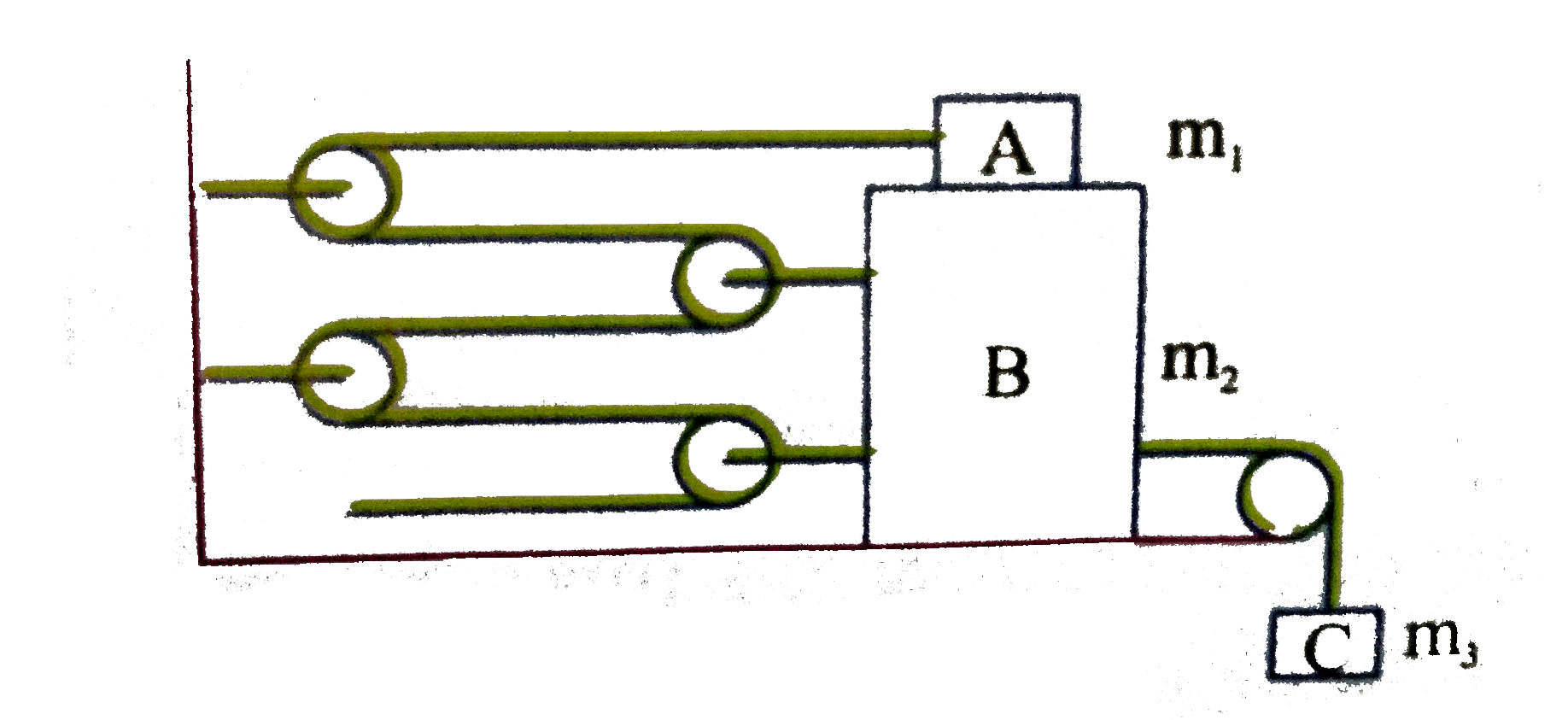 View Solution
View Solution

